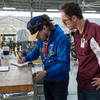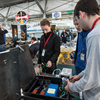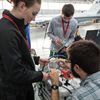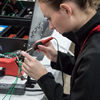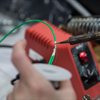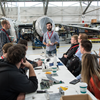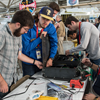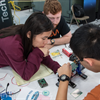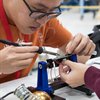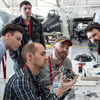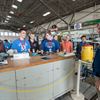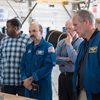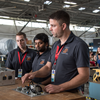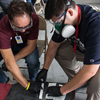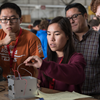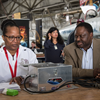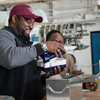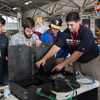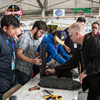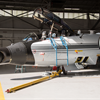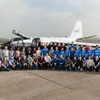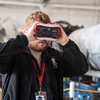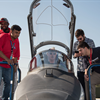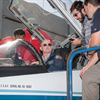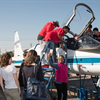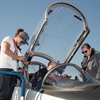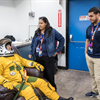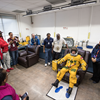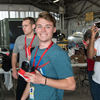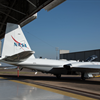Student experiments SOAR on NASA’s WB-57 high-altitude aircraft
More than 130 students from seven schools worked with NASA engineers to design experiments to fly high-altitude Student Opportunities in Airborne Research (SOAR) missions last week that also collected data for atmospheric research.
The project started in July and culminated with a weeklong visit to NASA Johnson Space Center’s operations facility at Ellington Airport, where the experiments underwent rigorous testing and reviews before being flown on NASA’s WB-57 aircraft at altitudes up to 60,000 feet. More than 50 students traveled to Houston to work side-by-side with aircraft specialists. During the week, experiments flew up to three times on the high-altitude aircraft over the southern Texas and Louisiana coast.
“SOAR is a great example of how we use NASA-unique assets to engage STEM students directly with the work of our Agency Missions,” said Robert Musgrove, director of Education at Johnson.
Each team had the opportunity to propose its own experiment, or to design and build its own Environmental Data Recorder for collecting information during the flights.
“The SOAR program provided the students a once-in-a-lifetime opportunity to design, build, test and fly an experiment on one of the few high-altitude research aircraft in NASA’s fleet,” said Charlie Mallini, WB-57 Program Office manager. “There are practicing engineers that will go through their entire professional career and never have this type of an experience.”
The NASA WB-57 Program provides unique, high-altitude airborne platforms to U.S. government agencies, academic institutions and commercial customers in support of scientific research and advanced technology development and testing at locations around the world.
Aside from the scientific results, SOAR also provides students with a unique experience designed to enhance student learning, performance and interest in science, technology, engineering and math (STEM). SOAR enabled students to have a firsthand experience working with NASA to conceptualize, design and test experiments and hardware for real-world applications.
Follow the JSC Education on social media: https://www.facebook.com/jsceducation








